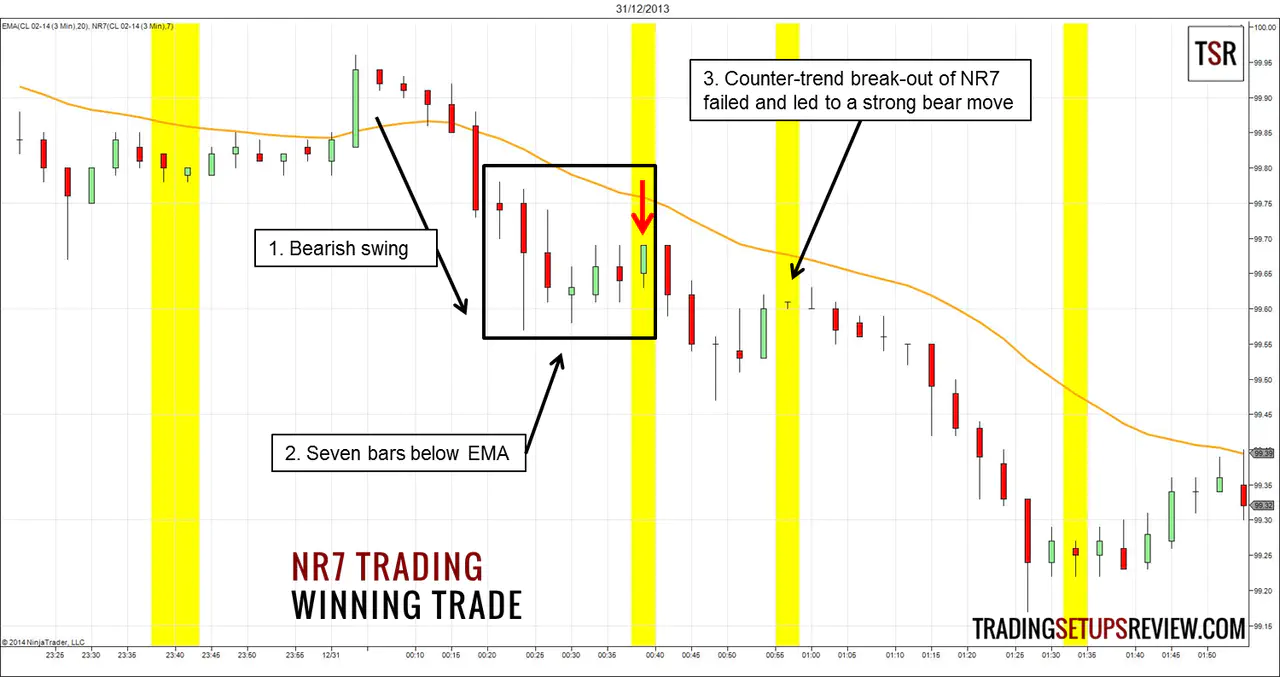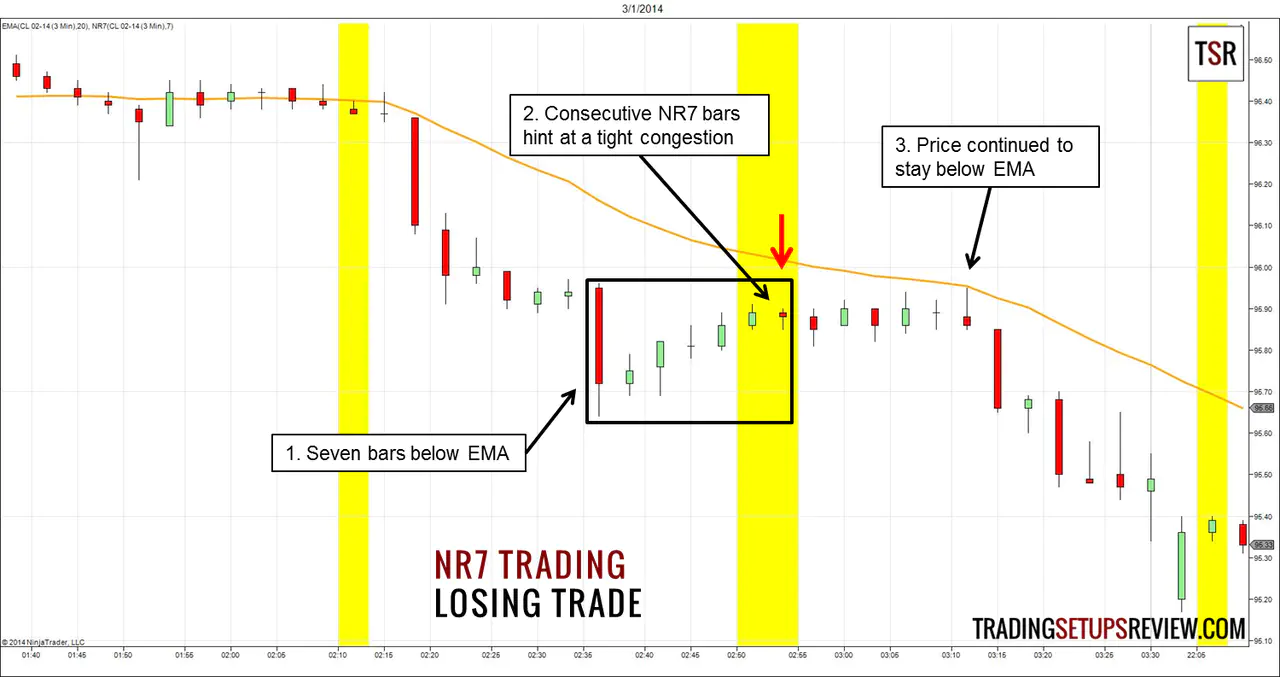NR7 Trading Strategy
By Galen Woods ‐ 3 min read
Profit from market volatility by finding the calm before the storm with the NR7 trading strategy. Find the narrow bar that leads to the next impulse move.
The quiet period before the next explosive market move is like the calm before the storm. NR7 helps us to find the calm so that we can prepare and profit from the impending storm.
NR7 means narrow bar 7. It is a bar that has a smaller range than the six bars before it. It is a range contraction that precedes range expansion.
In our trading strategy, we add a simple trend rule to find low risk trend trades.
Trading Rules - NR7 Trading Strategy
Long Trading Strategy
- Past 7 bars are completely above the 20-period EMA
- Buy on break of high of NR7 bar
Short Trading Strategy
- Past 7 bars are completely below the 20-period EMA
- Sell on break of low of NR7 bar
NR7 Trading Examples
Winning Trade - Bearish NR7
This is a 3-minute chart of CL futures on NYMEX. The orange line is the 20-period EMA. The NR7 bars have a yellow background.
- Price swung down from above the EMA with eight consecutive bearish bars.
- The seven bars that defined the NR7 bar were all below the EMA, showing that the bearish momentum held up. Although the NR7 bar closed higher than its open, it formed a micro triple top with the two bars before it. After the low of the NR7 bar broke, we went short.
- Price came back up to test the break-even level of the trade. However, following a failed bull break-out of the doji NR7, prices plummeted.
The doji NR7 is also a great example to warn us against using NR7 to trade reversals without confirmation from other analysis.
Losing Trade - Bearish NR7
This is another 3-minute chart of CL futures. In this example, the NR7 trade experienced whipsaws.
- The seven bars leading up to the NR7 bar were all below the EMA. Despite the four bullish bars in the retracement, price could not reach the EMA.
- As price broke the low of the second NR7 bar, we went short. However, the consecutive NR7 bars was a hint of the tight congestion that followed.
- Price hit our stop-loss at the high of the NR7 bar. It was a false break-out that reversed and continued the bear trend. Re-entry was a valid option as price stayed below the EMA throughout the retracement and our bearish outlook was not compromised.
Review - NR7 Trading Strategy
Toby Crabel studied the NR7 pattern together with the NR4/ID trading setup. Both patterns are popular trading tools found in many trading strategies.
(Read: Day Trading with Short Term Price Patterns and Opening Range Breakout)
In this NR7 trading strategy, we looked for markets with a strong trend and used NR7 as a low risk entry point to join the trend.
Do not follow the trading rules mechanically. Some NR7 bars appear at the high of a bull trend or the low of a bear trend. These setups are not the target of our trading strategy. Wait for a real pullback to enter.
Be very careful when you see multiple NR7 bars. Narrow range bars in proximity are a sign of price congestion in which NR7 patterns are less reliable.
Remember to follow the path of least resistance. The best NR7 bars occur when price is moving against the path of least resistance.

